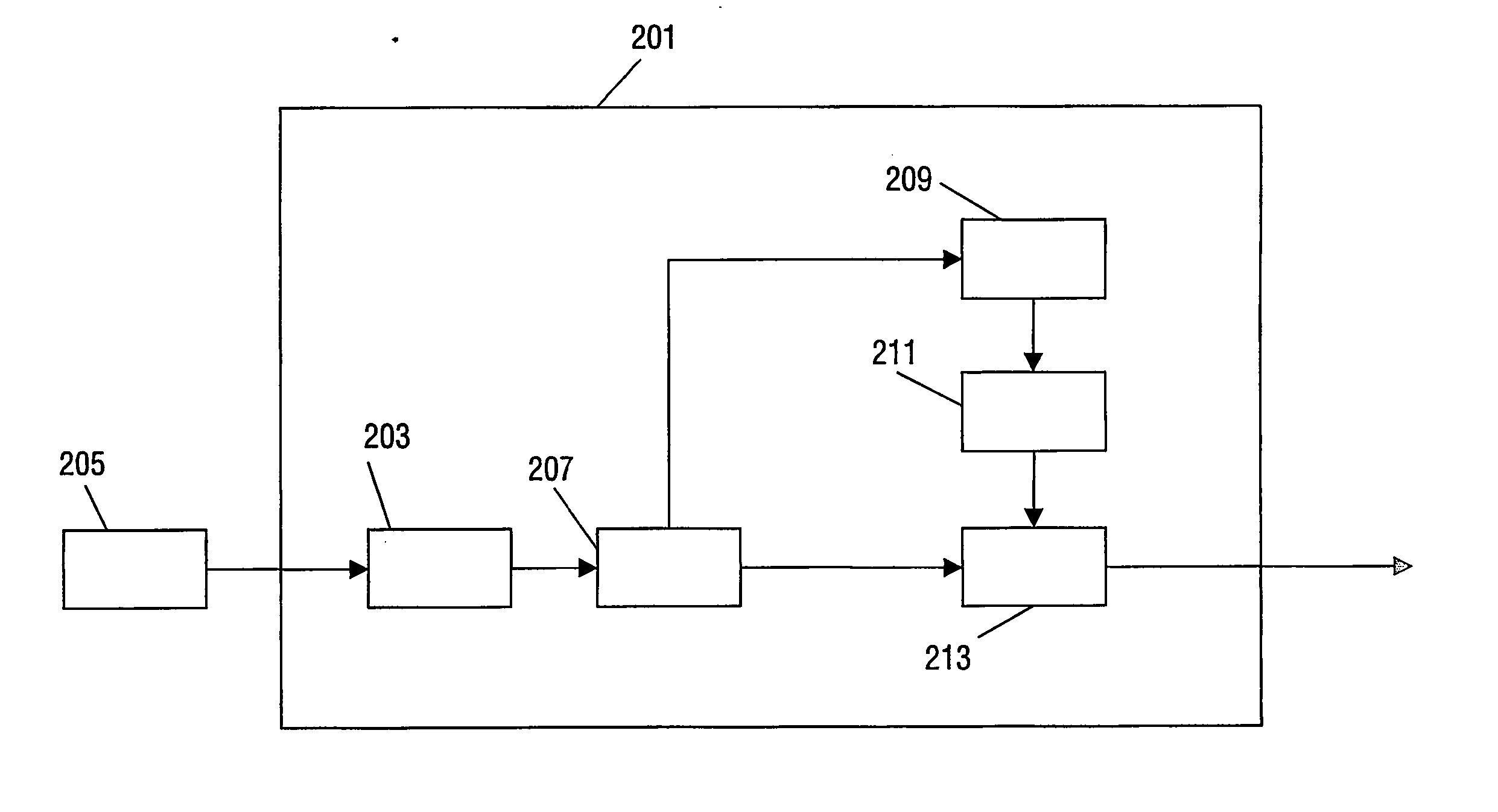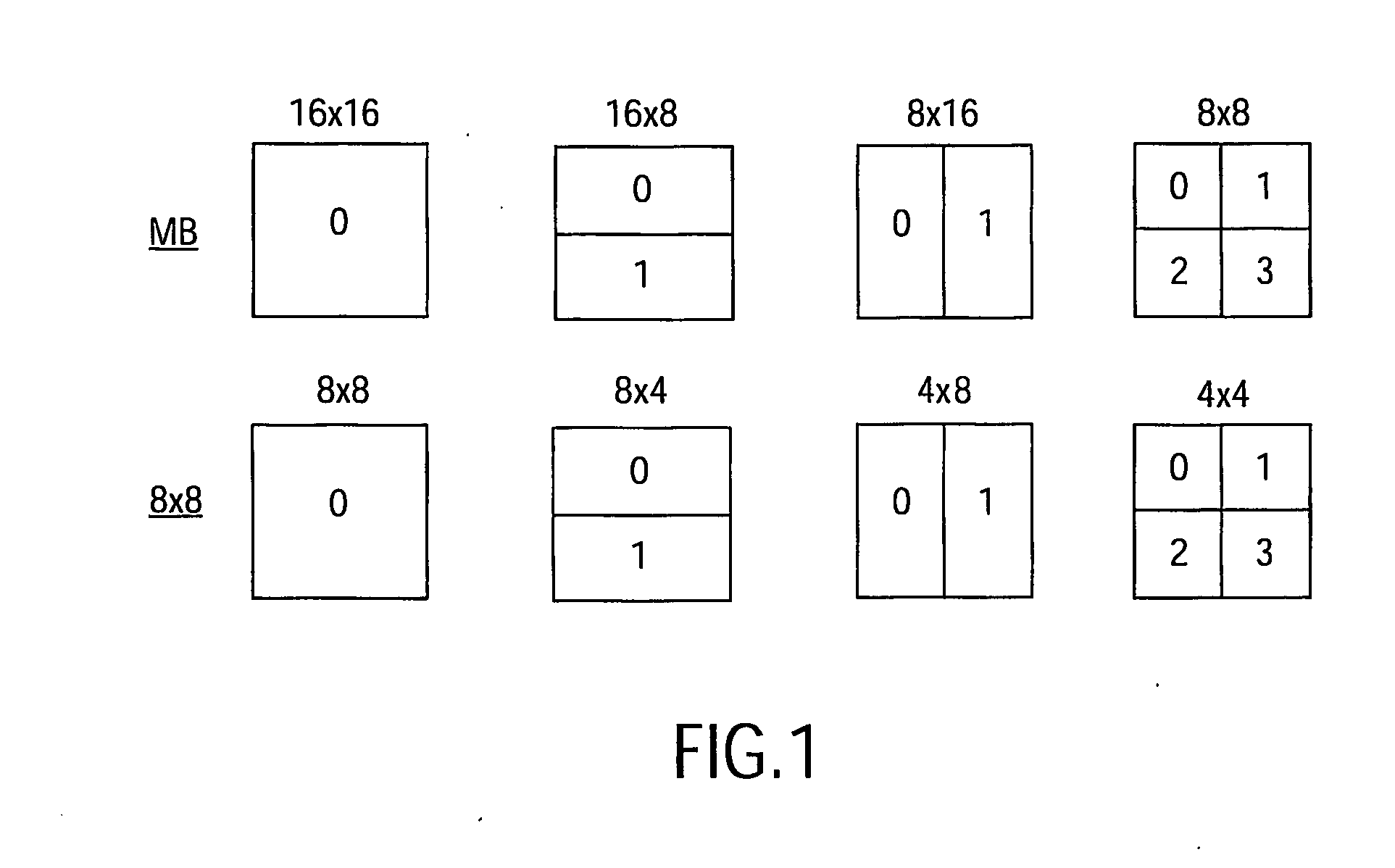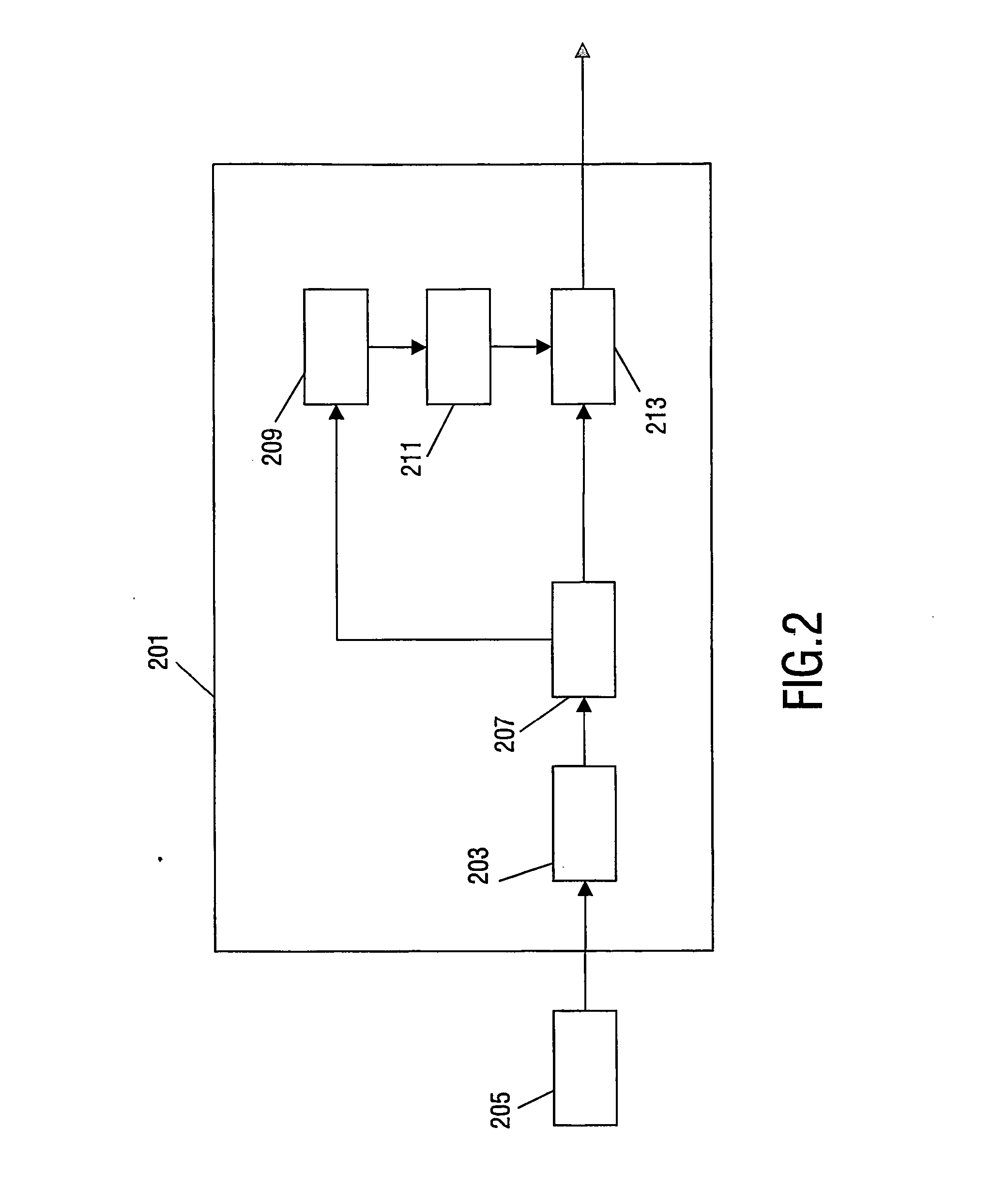Video transcoding
a transcoding and video technology, applied in the field of video transcoding, can solve the problems of reducing the potential of h.26l deployment in a broad range of applications, requiring considerable resources, and so as to facilitate and reduce facilitate the effect of reducing the complexity of the transcoding process
- Summary
- Abstract
- Description
- Claims
- Application Information
AI Technical Summary
Benefits of technology
Problems solved by technology
Method used
Image
Examples
Embodiment Construction
[0044] The following description focuses on an embodiment of the invention applicable to a transcoder for transcoding signals of a first video standard having a high degree of freedom in selection of encoding parameters to a signal of a second video standard having a lower degree of freedom in selection of encoding parameters. In particular the description focuses on a transcoder for transcoding an H.264 encoded video signal into an MPEG-2 encoded video signal. However, it will be appreciated that the invention is not limited to this application and may be used in association with many other video encoding algorithms, specifications or standards.
[0045] In the following, references to H.264 comprise a reference to the equivalent ISO / IEC 14496-10 AVC standard.
[0046] Most established video coding standards (e.g. MPEG-2) inherently use block-based motion compensation as a practical method of exploiting correlation between subsequent pictures in video. For example, MPEG-2 attempts to p...
PUM
 Login to View More
Login to View More Abstract
Description
Claims
Application Information
 Login to View More
Login to View More - R&D
- Intellectual Property
- Life Sciences
- Materials
- Tech Scout
- Unparalleled Data Quality
- Higher Quality Content
- 60% Fewer Hallucinations
Browse by: Latest US Patents, China's latest patents, Technical Efficacy Thesaurus, Application Domain, Technology Topic, Popular Technical Reports.
© 2025 PatSnap. All rights reserved.Legal|Privacy policy|Modern Slavery Act Transparency Statement|Sitemap|About US| Contact US: help@patsnap.com



